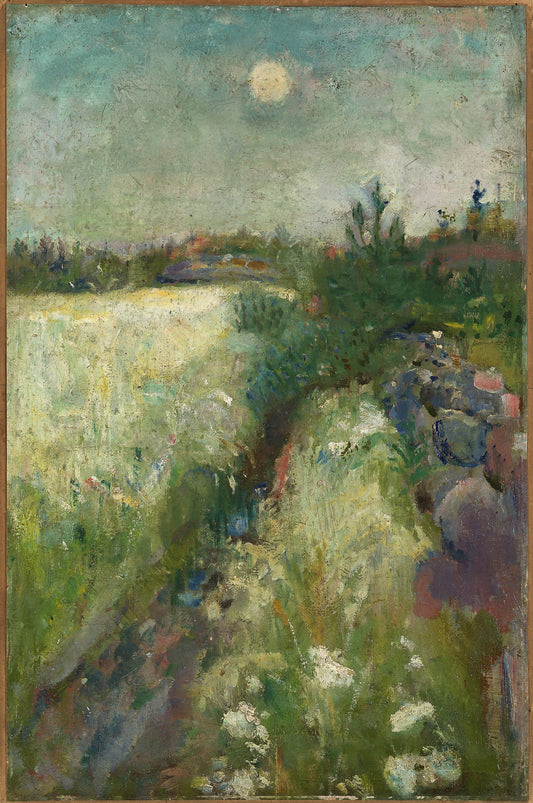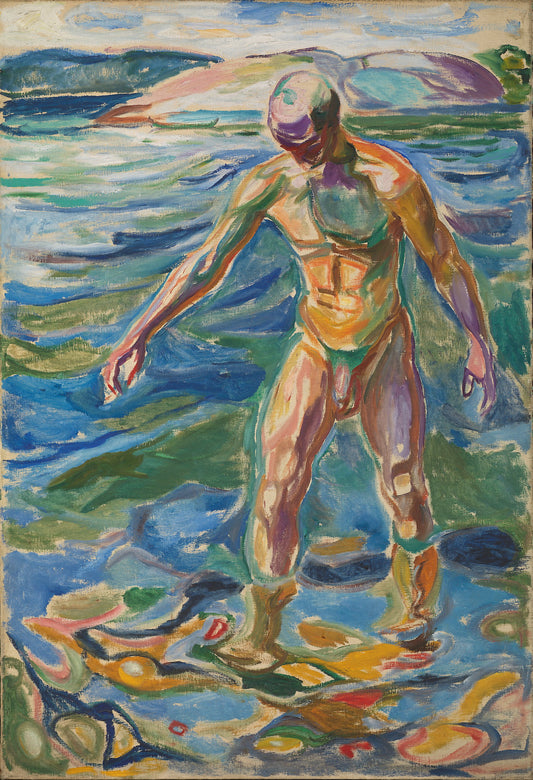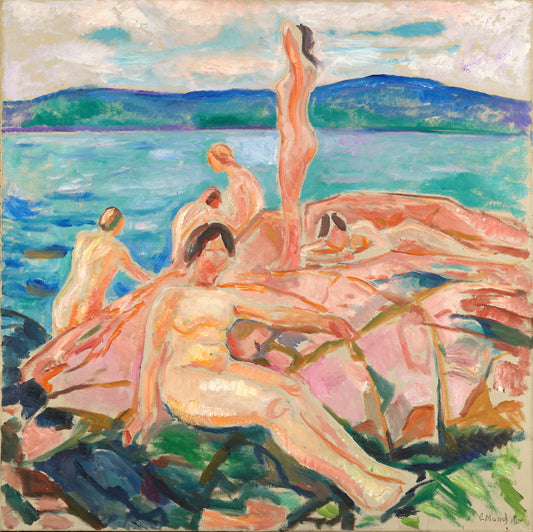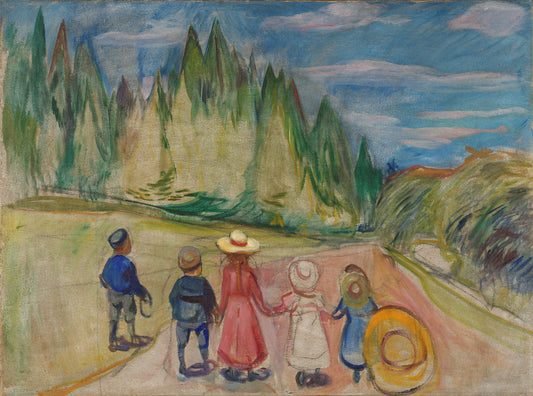Edvard Munch
Moonlight
Moonlight
Couldn't load pickup availability
About the original:
The colors are muted, but with clear contrasts between the dark forest floor, the white beach and the intense blue water. Details are simplified and subordinated to the whole, but without the artist letting go of the landscape's distinctive character and recognisability. The image has no action, but is rather an expression of a mood. At the same time, reference is often made to the moon pillar, the trees, the gently undulating shoreline and the water as symbols of the masculine and the feminine.
The motif is probably taken from the area around Åsgårdstrand, where Munch stayed in the summer of 1895. He was strongly attached to the place. The sea and the landscape both enticed and inspired, and the nature there can be found again in a number of the artist's pictures from the 1890s. Through these images, Munch writes somewhere, "the meandering shoreline winds, beyond lies the sea, which is always in motion, and under the crowns of the trees the diverse life is lived with its joys and sorrows."
The painting is a testamentary gift from Charlotte and Christian Mustad in 1959, and was incorporated into the collection in 1970.
Text: Marianne Yvenes
From "Edvard Munch in the National Museum", The National Museum 2008, ISBN 978-82-8154-034-7
Date: 1895
Other titles: Chiaro di luna (ITA)
Moonlight (ENG)
Designation: Painting
Material and technique: Oil on canvas
Technique: Oil
Material: Canvas
Dimensions: 93 x 110 cm
Subject: Visual arts
Classification: 532 - Visual arts
Motif: Landscape
Type of motif: Landscape
Motif - place: Åsgårdstrand
Acquisition: Testamentary gift from Charlotte and Christian Mustad 1959, received 1970
Inventory no.: NG.M.02815
Part of exhibition: Edvard Munch, 1983 - 1984
Becoming Edvard Munch: Influence, Anxiety and Myth, 2009
A Document Deutscher Kunst Darmstadt 1901-1976. Band 3. Akademie - Sezession - Avantgarde around 1900, 1976 - 1977
Munch 1863-1944, 1987
Munch, 1986
The dance of life. The collection from antiquity to 1950, 2011 - 2019
Nature's mirror. Nordic landscape painting 1840-1910, 2007
Art audience. The National Museum in the Kunststallen, 2021
Then Dahl and Munch. Romanticism, realism and symbolism in Norwegian landscape painting, 2001 - 2002
Lost Paradise: Symbolist Europe, 1995
Edvard Munch. The Frieze of Life, 1992 - 1993
Scandinavian Art. 19 artists from Denmark, Finland, Iceland, Norway, Sweden: seeing the silence and hearing the scream, 1987
Edvard Munch - Gemälde und Graphik, 1926 - 1927
Edvard Munch - Theme and Variation, 2003
Edvard Munch, 1998
Norway in pictures - Nature and feeling of nature in Norwegian painting through 175 years, 1989
Edvard Munch. Dal realismo all'espressionismo, 1999 - 2000
Post-impressionism. Cross-currents in European painting 1880-1906, 1979 - 1980
Edvard Munch. The Frieze of Life, 1993
Munch e lo spirito del Nord. Scandinavia nel secondo Ottocento, 2010 - 2011
Munch 150, 2013
Edvard Munch, 1927
Origini dell'Astrattismo - Verso altri orizzonti del reale, 1979 - 1980
Edvard Munch's "Mermaid", 2005
The magical north. Finnish and Norwegian art around 1900, 2015
Edvard Munch. The Frieze of Life, 1993
Munch 1863-1944, 2005
Edvard Munch. The Frieze of Life, 2004 - 2005
The Ecstacy of Color - Munch, Matisse and the Expressionists, 2012 - 2013
Landschaft als Kosmos der Soule. Malerei des nordischen Symbolismus bis Munch, 1998
Nature's mirror. Nordic landscape painting 1840-1910, 2006
Nature's mirror. Nordic landscape painting 1840-1910, 2006 - 2007
A Mirror of Nature. Nordic Landscape Painting 1840-1910, 2007
Munch, 1985 - 1986
The magical north. Finnish and Norwegian art around 1900 (Main title/ applied/ Norwegian), 2015
Registration level: Single object
Owner and collection: The National Museum of Art, Architecture and Design, Visual Art Collections
Photo: Børre Høstland/Høstland, Børre

See all works
-
Flower meadow from Veideland
Vendor:Edvard MunchRegular price From 300,00 NOKRegular priceUnit price per -
Bathing man
Vendor:Edvard MunchRegular price From 300,00 NOKRegular priceUnit price per -
High summer
Vendor:Edvard MunchRegular price From 300,00 NOKRegular priceUnit price per -
The fairy forest
Vendor:Edvard MunchRegular price From 300,00 NOKRegular priceUnit price per
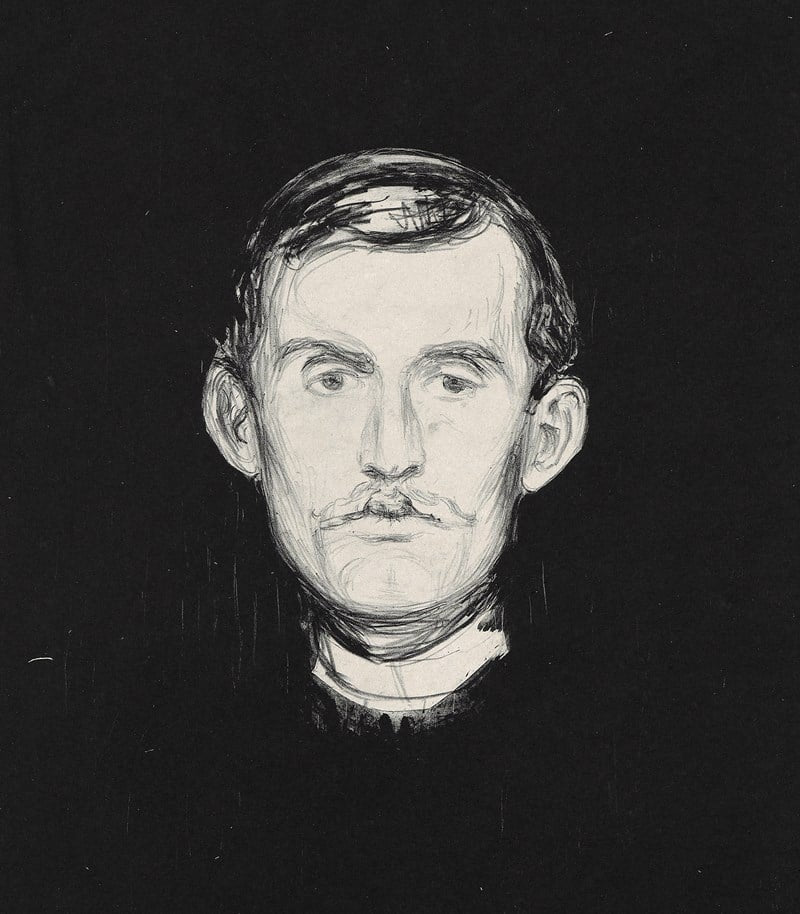
Edvard Munch
Edvard Munch worked as an artist for over sixty years. He was creative, ambitious and hardworking. He made close to two thousand paintings, hundreds of graphic motifs and thousands of drawings. In addition, he wrote poems, prose and diaries. Scream, Madonna, Death in the sick room and the other symbolist images from the 1890s have made him one of the most famous artists of our time.
"Don't become an artist!" Edvard wanted to become an artist early on, and there was no doubt that he had talent. But his father refused to allow him to follow his dream, and Edvard therefore began studying to become an engineer. But after just one year, he chose to defy his father, and changed the engineering school to the Royal School of Design in Kristiania. Talented and provocative bohemian It was obvious to everyone in the Norwegian art community that the young man was a rare talent. In 1883, aged 20, he made his debut at the Autumn Exhibition. In 1886, Munch became acquainted with the writer and anarchist Hans Jæger, the leader of Kristiania-bohemen. The bohemian milieu convinced Munch that art had to renew itself in order to reach people, and to mean something in their lives. In the same year, he exhibited the painting The Sick Child. It created debate! Courage led to a breakthrough. Some said that The Sick Child was brilliant, while others thought it was unfinished and that it had nothing to do at an exhibition. Today this is considered Munch's breakthrough. Here he showed independence and a willingness to take new paths.
With one key word, we can say that his artistry from here until his last brush stroke is characterized by experimentation. Munch did not care about established "rules" for so-called good art. His techniques in both painting and graphics were innovative. From man's emotional life, to agriculture and landscape Henrik Ibsen's dramas about man's existential challenges inspired Munch. Themes such as death, love, sexuality, jealousy and anxiety were central to his early pictures. Some themes sprung from personal experiences. For example, Death in a hospital room and The sick child can be linked to his recollection of his mother's and sister's illness and early death. After 1910, Munch chose a quieter and more withdrawn life. With his own farm both at Ekely and in Hvitsten, he found completely new motifs, such as agriculture, working life and landscape. The man in the cabbage field is a typical example from this time.


